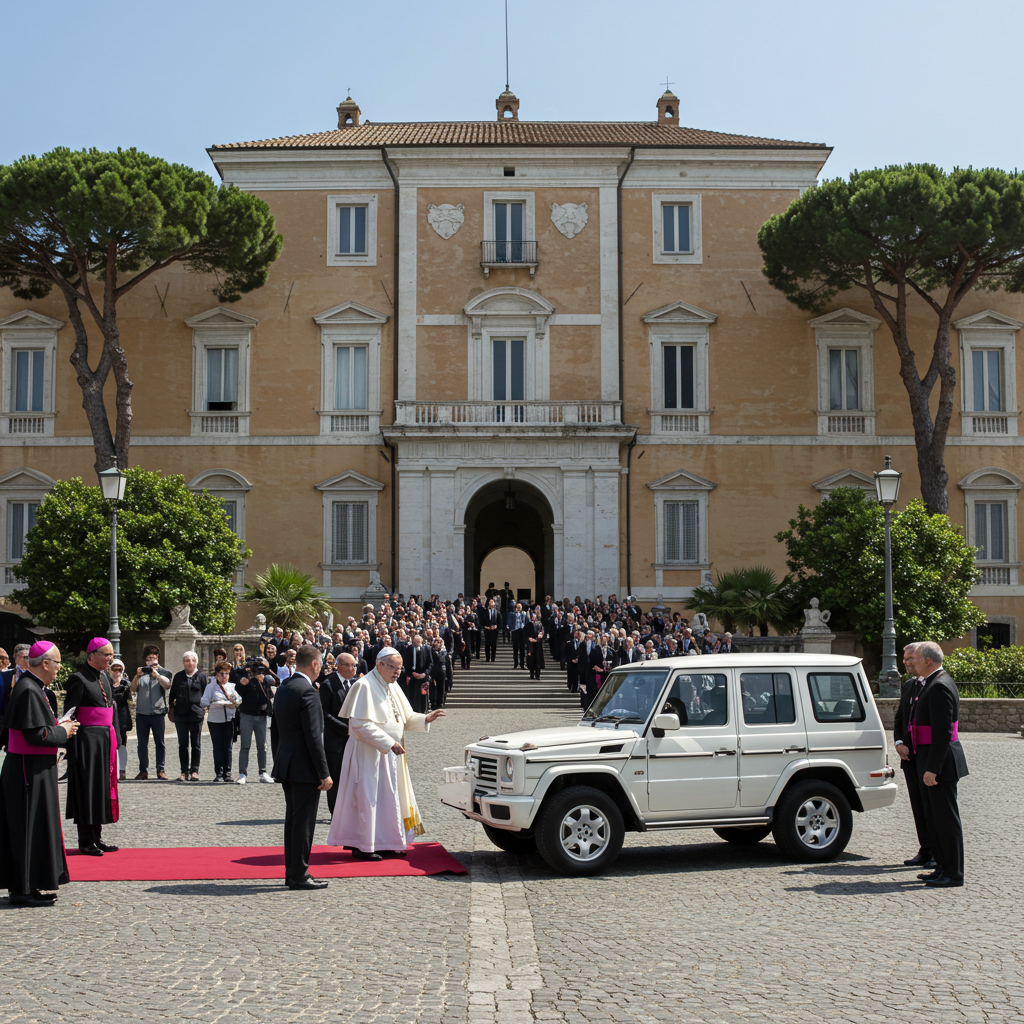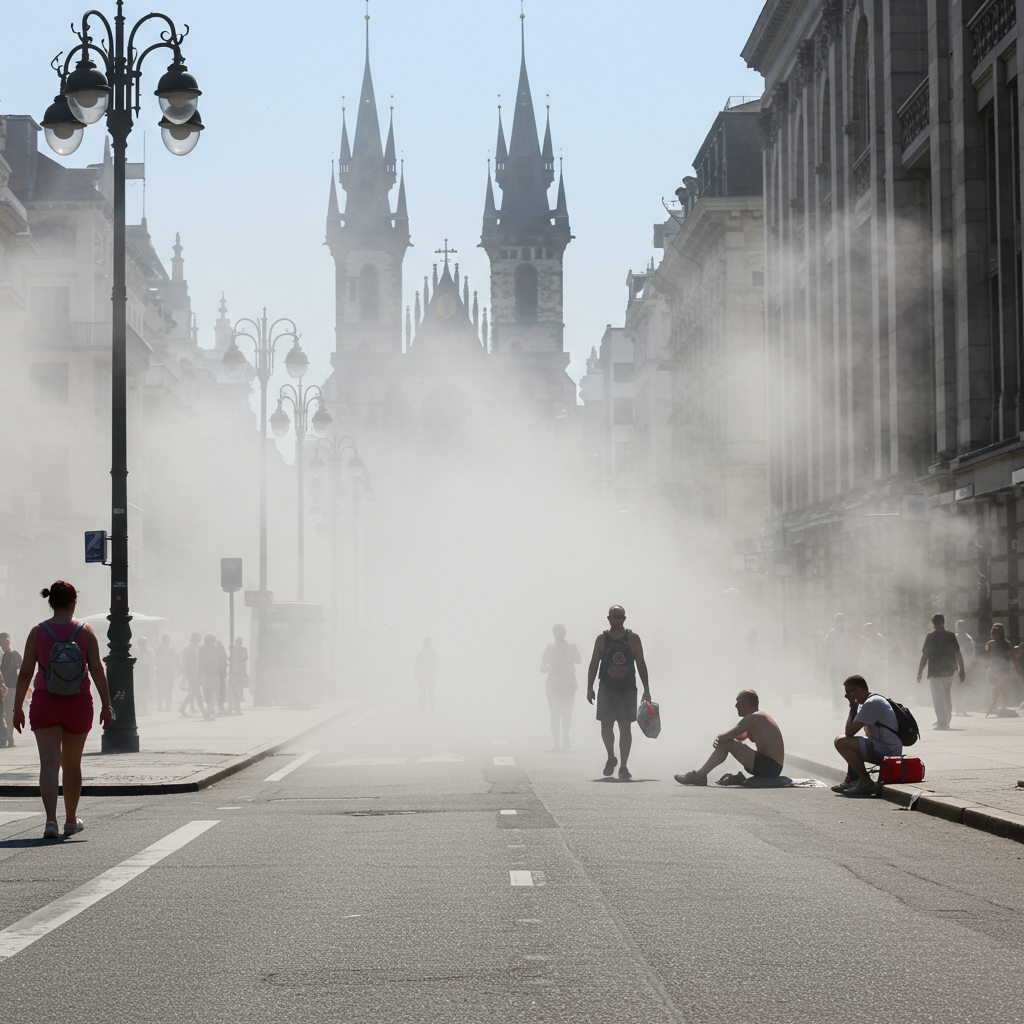Pope Leo is set to revive a centuries-old papal tradition, embarking on a summer retreat to the tranquil lakeside town of castel Gandolfo, located just an hour’s drive south of Rome. This significant move marks the first time a pope has officially spent an extended summer break there in 12 years, departing from the practice of his predecessor, Pope Francis, who remained at the vatican year-round. Pope Leo’s return to the historic pontifical villas is highly anticipated by residents of Castel Gandolfo, who hope his presence will bring a vital boost to local tourism and economic activity. Scheduled from July 6 to July 20, with a return visit planned for the Assumption feast in August, the pontiff’s stay connects the modern papacy with a deep historical legacy tied to this picturesque hill town overlooking Lake Albano.
A Centuries-Old Tradition Rekindled
For hundreds of years, the rolling hills and cooler climate of Castel Gandolfo offered popes a welcome respite from the oppressive summer heat of Rome. The Vatican’s connection to the town dates back to 1596, when the Holy See acquired the original property. However, it was Pope Urban VIII who, starting in 1624, commissioned the construction of the main papal palace specifically as a summer residence. This practice became a staple of papal life, with dozens of pontiffs seeking rest and solitude within the extensive grounds over the centuries. The Castel Gandolfo estate, which grew through subsequent acquisitions, now encompasses a sprawling 135 acres – notably larger than Vatican City itself. This tradition provided popes with a change of scenery, allowing for contemplation and recovery during the hottest months, often stretching from July through September. Popes John Paul II and Benedict XVI both regularly spent their summers here, sometimes combining their stay with trips to the Italian Alps.
The Papal Estate: More Than Just a Summer Palace
The pontifical villas at Castel Gandolfo are far more than just a single building. The vast 135-acre property includes substantial Renaissance-style gardens covering 74 acres, working farmland spanning 62 acres, three distinct residential buildings, and even a functional farm that historically supplied the Vatican with fresh produce and dairy. While the iconic Apostolic Palace sits prominently on the town square, there are other residences within the walled compound, including the Villa Barberini and the Villa Cybo. The estate showcases a blend of historical architecture, stunning landscape design, and practical agricultural use, reflecting centuries of papal stewardship. Pope Leo’s recent visit on May 29, 2025, indicated his interest in the estate’s diverse offerings, including the “Borgo Laudato Si'” ecology project initiated by Pope Francis in 2023, alongside touring the former papal living quarters.
Pope Francis’s Different Path
Pope Leo’s decision stands in contrast to his immediate predecessor, Pope Francis. Known for his humility and tendency to avoid the traditional trappings of papal privilege, Pope Francis chose not to utilize the Castel Gandolfo property for summer vacations throughout his 12-year pontificate. Described by some as a “workaholic,” he preferred to remain within the Vatican walls, even during Rome’s sweltering heatwaves, such as the one currently pushing temperatures past 37 degrees Celsius (99 degrees Fahrenheit). This departure from tradition significantly impacted the local economy of Castel Gandolfo, a town historically reliant on the influx of visitors drawn by the papal presence, particularly for the Sunday Angelus prayer and the Feast of the Assumption celebrations.
A Museum Legacy and Changing Tourism Flows
While Pope Francis did not stay overnight in Castel Gandolfo, he did leave a lasting mark on the property and the town. In an effort to support local tourism after discontinuing the summer stays, he opened the palace gardens to the public in 2014 and later converted a significant portion of the historic Apostolic Palace into a museum, which opened in 2016. Local business owners, like Marina Rossi, who owns a mosaic studio, acknowledge that this initiative shifted the pattern of tourism. Previously, visitors often came only for fleeting papal audiences (“hit-and-run tourism”) during the summer months. The museum, however, has fostered a more consistent flow of visitors throughout the year, providing a steadier economic baseline for the town of approximately 8,900 residents.
Pope Leo’s Return: Details of the Stay
Pope Leo, elected on May 8, 2025, following Pope Francis’s death, will be spending his first extended summer period outside the Vatican in Castel Gandolfo. His initial two-week stay is scheduled from the afternoon of Sunday, July 6, until the afternoon of July 20. He plans to return for a shorter holiday weekend from August 15-17 to coincide with the Feast of the Assumption, a date historically significant for papal appearances in the town. Importantly, Pope Leo will not be residing in the former Apostolic Palace that now houses the museum. Instead, he will stay in the nearby Villa Barberini, which previously served as a summer residence for Vatican secretaries of state. As a standard procedure during this period, public and private audiences at the Vatican are suspended for most of July, expected to resume on July 30.
Public Opportunities and Private Retreat
While Pope Leo’s primary purpose for the visit is a period of rest and retreat away from the intensity of the Vatican and Rome’s heat, there will be specific opportunities for the public to see him. The Prefecture of the Papal Household has announced he will hold public engagements within or near the town square. He is scheduled to celebrate Sunday morning Mass on July 13 at the parish Church of St. Thomas of Villanova in Castel Gandolfo’s main square, followed by the traditional Angelus prayer at noon in front of the Apostolic Palace. On July 20, before returning to the Vatican, he will celebrate Sunday Mass in the cathedral of the nearby city of Albano Laziale and recite the Angelus in Castel Gandolfo. During the August visit, he will celebrate Mass on August 15 at St. Thomas parish and recite the Angelus on both August 15 and August 17 in the square. These public appearances offer a chance for the faithful and tourists alike to connect with the pontiff, bringing back some of the historical vibrancy to the town square.
Hopes for Castel Gandolfo
The return of a sitting pope for a summer stay has generated significant excitement and hope among the residents and business owners of Castel Gandolfo. Mayor Alberto De Angelis expressed the community’s enthusiasm, stating that the presence of popes has historically meant significant activity and economic growth for the area. Local businesses, which felt the impact of Pope Francis’s absence, are optimistic about the potential boost. Stefano Carosi, owner of a coffee shop on the main square, highlighted the historical importance of the pope’s presence in attracting visitors. While Pope Francis’s museum initiative established a year-round flow, Pope Leo’s actual residency is seen as an additional draw. Marina Rossi noted her happiness about this “important moment,” believing it offers the town another chance to attract even more tourists, building upon the foundation laid by the museum. The return of the Angelus blessing in the square on specific dates is particularly anticipated as a direct link to the town’s papal past.
The Significance of the Revival
Pope Leo’s decision to revive the Castel Gandolfo summer tradition can be interpreted in several ways. It could signal a pastoral desire to seek necessary rest and recuperation away from the intense demands of the papacy, particularly given the summer heat, echoing the practical reasons that established the tradition centuries ago. It might also represent a symbolic gesture, reconnecting the papacy with a significant historical site and tradition that had been dormant. While Pope Francis purposefully moved away from some traditional elements, Pope Leo may be finding a balance, respecting his predecessor’s legacy (like the museum and ecology project) while reinstituting practices he deems beneficial, either personally or institutionally. For the Catholic faithful and Vatican observers, this return offers a tangible sign of change under the new pontificate and a reaffirmation of the unique historical connection between the papacy and Castel Gandolfo. It underscores the multifaceted nature of the papal role, balancing public duty in the Vatican with the need for private retreat and historical continuity.
Frequently Asked Questions
What dates will Pope Leo be at Castel Gandolfo this summer?
Pope Leo is scheduled to stay at the pontifical villas in Castel Gandolfo for two periods this summer: initially from Sunday, July 6, through Sunday, July 20, 2025. He plans to return for a short holiday weekend from Thursday, August 15, through Sunday, August 17, to celebrate the Feast of the Assumption.
Where will Pope Leo stay while in Castel Gandolfo?
Unlike many of his predecessors who resided in the Apostolic Palace on the main square, Pope Leo will be staying in the nearby Villa Barberini, located within the extensive Vatican-owned estate grounds. The Apostolic Palace was converted into a museum by Pope Francis and remains open to the public.
Will the public be able to see Pope Leo in Castel Gandolfo?
Yes, there will be opportunities for the public to see Pope Leo during his summer stays. He is scheduled to celebrate Sunday Mass and lead the Angelus prayer in or near the town square on specific dates: July 13, July 20, August 15, and August 17, 2025.
Conclusion
Pope Leo’s decision to spend his summer break at Castel Gandolfo marks a notable return to a cherished papal tradition, dormant for over a decade. This move not only provides the pontiff with a cooler retreat from Rome’s summer heat but also reignites hope and excitement in the local community, anticipating a significant boost to tourism and economic activity. While Pope Francis left a valuable legacy by opening the historic palace as a museum, Pope Leo’s physical presence and planned public appearances are poised to bring back a unique dimension of the town’s historical connection to the papacy. As Pope Leo settles into the Villa Barberini, his stay symbolizes a potential blending of continuity and change, honoring centuries of tradition while navigating the modern landscape of the papacy and its relationship with the faithful and the world.



